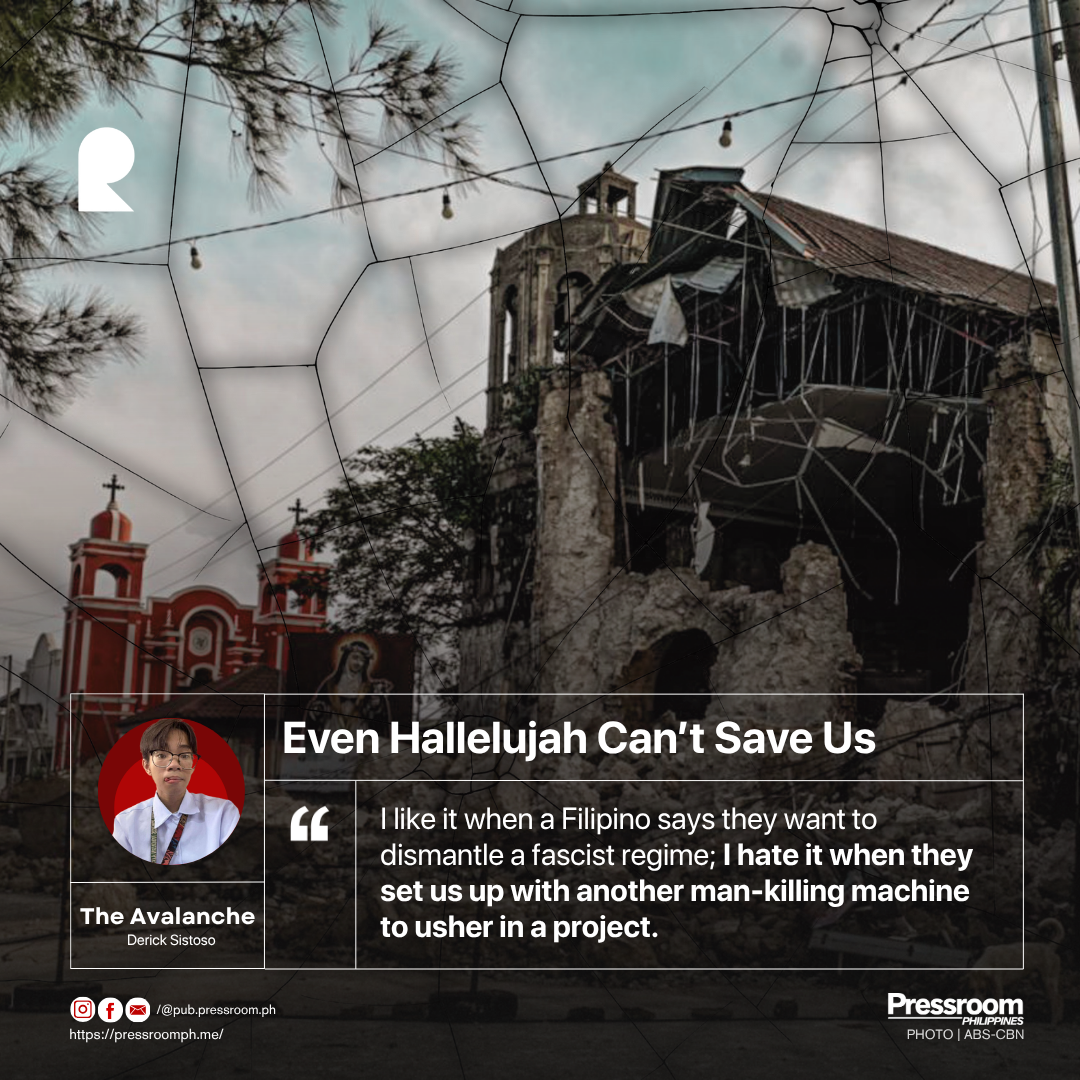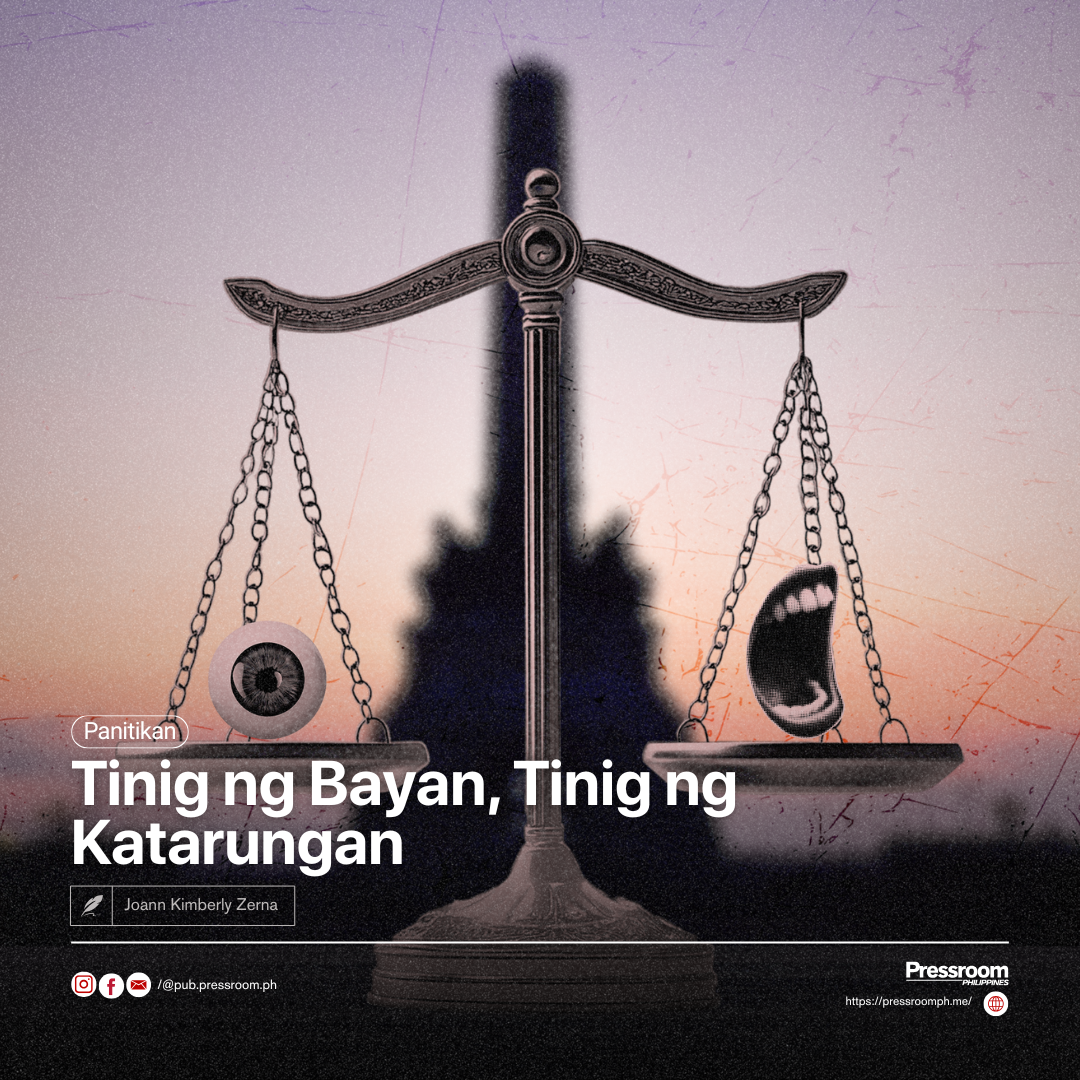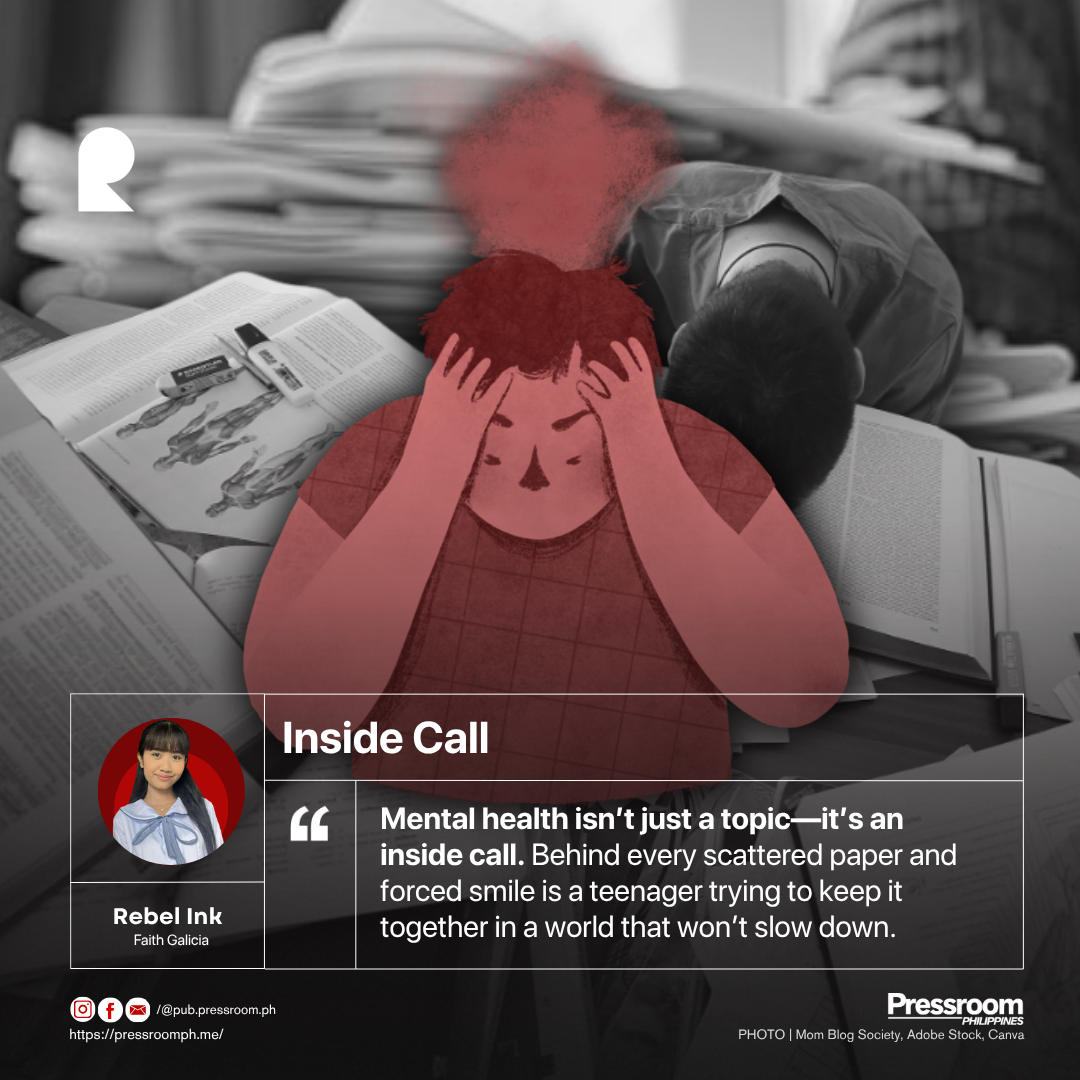via Derick Sistoso
I like it when a Filipino says they want to dismantle a fascist regime; I hate it when they set us up with another man-killing machine to usher in a project.
Like man to the slaughter, it’s always another scenario of fight or flight during a natural disaster. You either play charades with the ground to guess if it’s stable enough to support not only your mental capacity, but also your actual physical body. One moment, you could be on holy ground—the next, you could be buried under it in all of its glory. Gravel, stones, and even concrete couldn’t compete with the thought of being strong enough to glorify safety, because the contractors factioned them to be designed with flaws, intentionally.
When a 6.9 magnitude earthquake hit Cebu, houses were swaying in the wind, the ground was dancing to the moving plates, and people ducked, covered, and held fast. PHILVOLCS classified the disaster at Intensity VII (Destructive) as it was felt in places like Bogo City, Daanbantayan, Medellin, San Remigio, and Tabuelan. Many were left displaced because their homes were being reduced to ashes before their very eyes. They slept on the wet and compacted roads, with only plastic bags to cover them, as rain was one of the very problems that they were enduring. And yet, as families clutched what little they could carry, the official count of roads in ‘poor’ or ‘bad’ condition became more than just numbers.
It’s not new to us that the go-to Philippine infrastructure is like spooning Vegemite on its own. It is actually worse than that, just like jamming a fork into a wall outlet. It’s a suicide mission, if you will. The Department of Public Works and Highways found that an estimated 19.93% of the paved concrete roads (primary, secondary, tertiary) are rated good; ~27.48% of concrete-paved roads are rated “fair”; ~7.23% are in poor condition; and ~2.81% in bad condition. Call that selective concrete solutions.
To put it into perspective, DPWH Secretary Vince Dizon noted that the Cebu earthquake caused damage estimated to be around ₱2 billion, and that was just for roads and bridges. If you added the other factors, such as ports, schools, hospitals, and other buildings, it would be approximately 3 billion PHP. If you harvest all organs that I yield, the damage costs still rack up to be more than what I’m physically worth. They’re in debt with ₱2 billion of cracked asphalt and 3 billion two-faced promises. Ironic when they yell out change for a cause.
You could potentially argue that that’s not too big, but I could counter by splashing “tubig” at your face, while showing the people who are currently fighting for their lives. “It’s only a small percentage,” you say, but you forget that even 1% is enough to drag a child into potholes. It’s enough to collapse a large chunk of a hospital’s foundation with ease. It’s enough to put children 6 feet deep in the ground. But do you know what’s not enough? Properly structured and planned blueprints. But I guess nothing is ever enough for you, huh? All you could ever do is just sit, watch, and pray for ignorance.
Hallelujah is nowhere near solving this problem; in fact, it can’t even save you from falling into a sinkhole.






